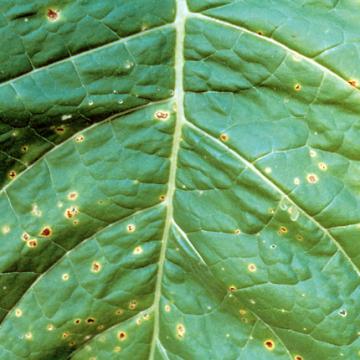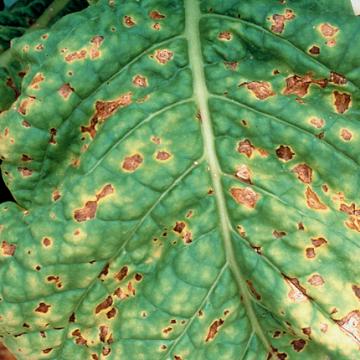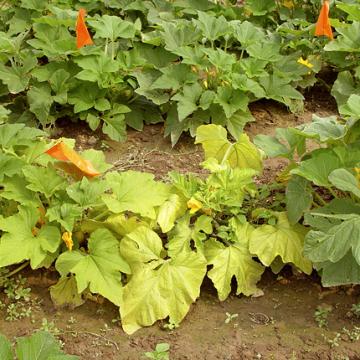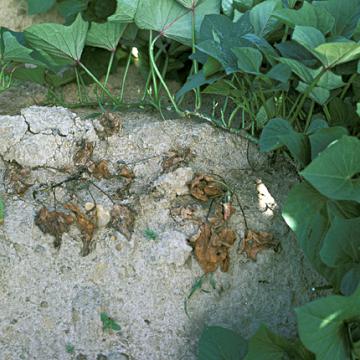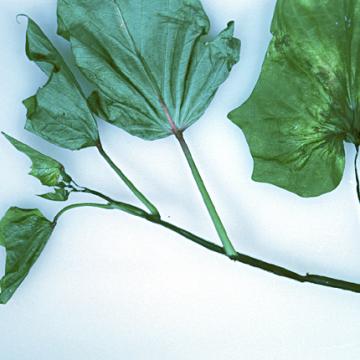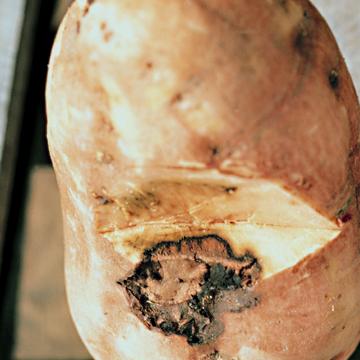DISEASE: Angular leaf spot
HOST: Tobacco
Leaf with light brown, angular spots. The difference between this disease and wildfire of tobacco is that wildfire is caused by a strain that produces tabtoxin. It causes conspicuous halos around lesions and large parts of a leaf may turn yellow .
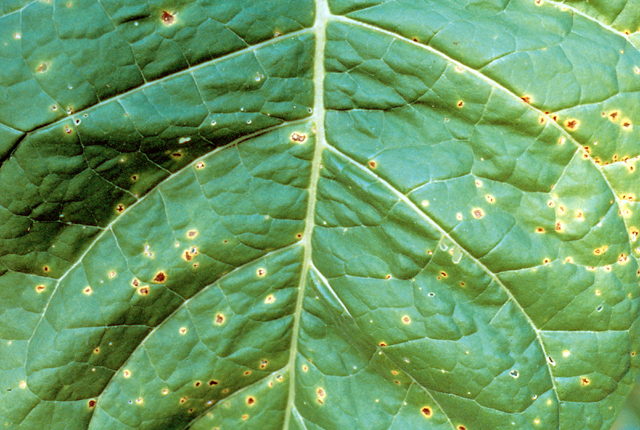
Angular leaf spot | Tobacco
DISEASE: Angular leaf spot
HOST: Tobacco (Nicotiana tabacum)
PATHOGEN: Pseudomonas syringae pv. tabaci
SOURCE: H. Shew
DISEASE: Angular leaf spot
HOST: Tobacco
Yellowing of adjacent tissues occur as spots age (midseason). It causes conspicuous halos around lesions. Large parts of a leaf may turn yellow.
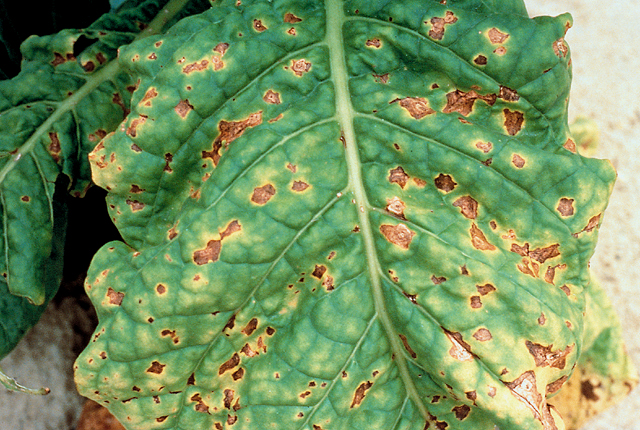
Angular leaf spot | Tobacco
DISEASE: Angular leaf spot
HOST: Tobacco (Nicotiana tabacum)
PATHOGEN: Pseudomonas syringae pv. tabaci
SOURCE: H. Shew
DISEASE: Angular leaf spot
HOST: Tobacco
Severely diseased leaf with extensive yellowing.
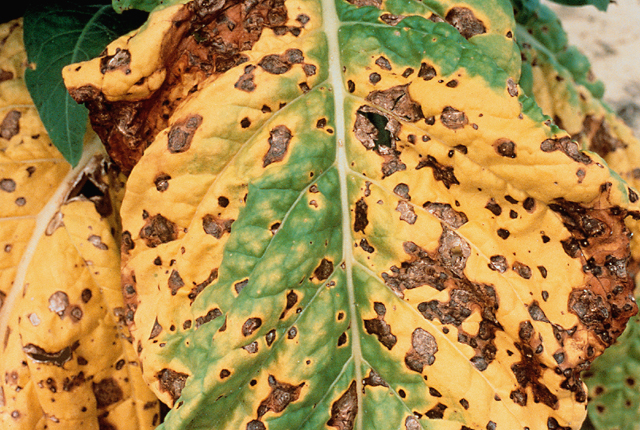
Angular leaf spot | Tobacco
DISEASE: Angular leaf spot
HOST: Tobacco (Nicotiana tabacum)
PATHOGEN: Pseudomonas syringae pv. tabaci
SOURCE: H. Shew
DISEASE: Aster yellows
HOST: Squash
Diagnostic characteristics for the disease are yellowing of young leaves, proliferation of secondary shoots, and rigid erect habit. Leaves are misshapen and smaller than normal and have stiff, thick laminae.
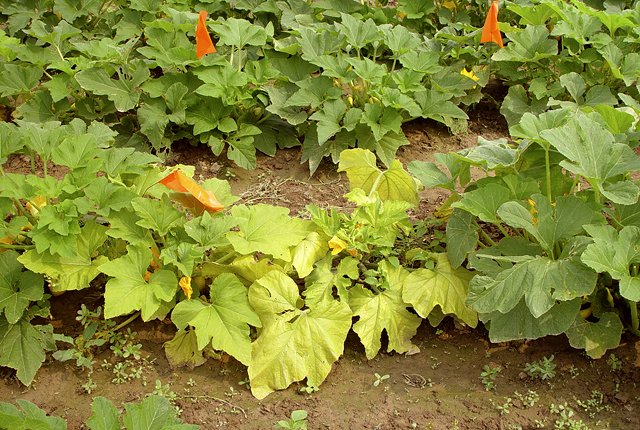
Aster yellows | Squash
DISEASE: Aster yellows
HOST: Squash (Cucurbita sp.)
PATHOGEN: 'Candidatus Phytoplasma asteris'
PATHOGEN SYNONYM: Phytoplasma Aster yellows group
SOURCE: S. Miller
DISEASE: Bacterial fasciation (Leafy gall)
HOST: Tobacco
Bacterial fasciation of tobacco.
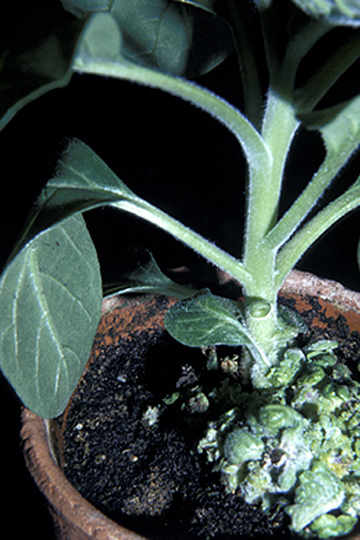
Bacterial fasciation (Leafy gall) | Tobacco
DISEASE: Bacterial fasciation (Leafy gall)
HOST: Tobacco (Nicotiana tabacum)
PATHOGEN: Rhodococcus fascians
SOURCE: R. Raabe
DISEASE: Bacterial stem and root rot
HOST: Sweet potato
Collapse of stems and roots caused by systemic activity of the pathogen.
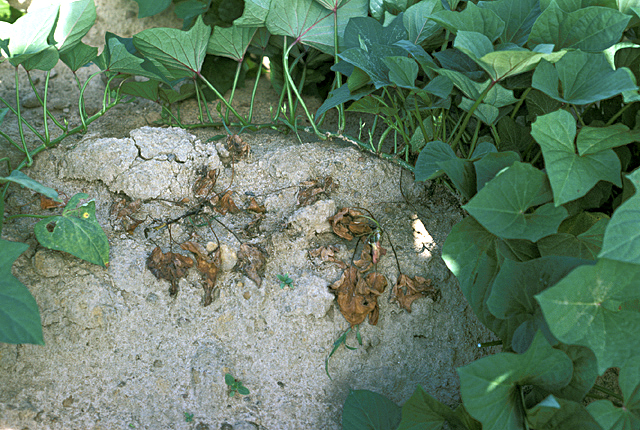
Bacterial stem and root rot | Sweet potato
DISEASE: Bacterial stem and root rot
HOST: Sweet potato (Ipomoea batatas)
PATHOGEN: Dickeya sp.
PATHOGEN SYNONYM: Erwinia chrysanthemi
SOURCE: N. Schaad
DISEASE: Bacterial stem and root rot
HOST: Sweet potato
Rot and collapse of stem, petioles, and leaves caused by systemic infection.
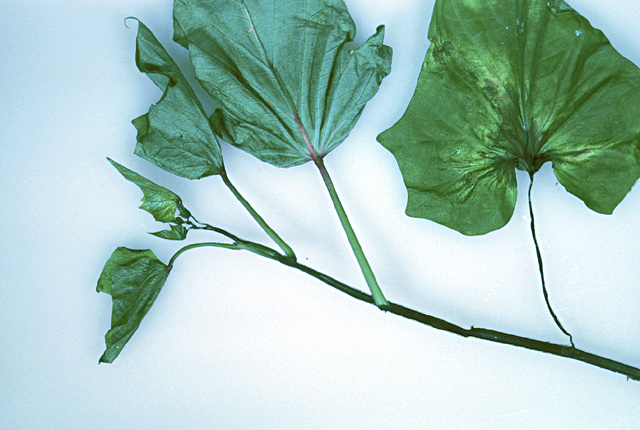
Bacterial stem and root rot | Sweet potato
DISEASE: Bacterial stem and root rot
HOST: Sweet potato (Ipomoea batatas)
PATHOGEN: Dickeya sp.
PATHOGEN SYNONYM: Erwinia chrysanthemi
SOURCE: N. Schaad
DISEASE: Bacterial stem and root rot
HOST: Sweet potato
Rot and internal discoloration of tuber.

Bacterial stem and root rot | Sweet potato
DISEASE: Bacterial stem and root rot
HOST: Sweet potato (Ipomoea batatas)
PATHOGEN: Dickeya sp.
PATHOGEN SYNONYM: Erwinia chrysanthemi
SOURCE: C. Clark
DISEASE: Bacterial wilt
HOST: Squash
Field with severe symptoms of wilt. Foliage often is chlorotic and leaf margins may be chlorotic and necrotic before plant death. Bacterial ooze may be seen streaming from the xylem when infected stems are cut.
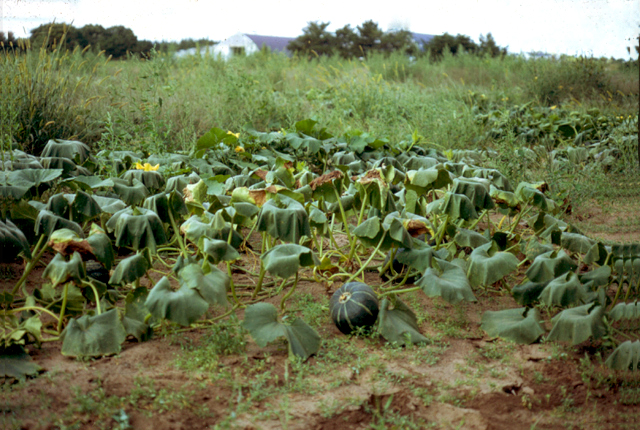
Bacterial wilt | Squash
DISEASE: Bacterial wilt
HOST: Squash (Cucurbita maxima)
PATHOGEN: Erwinia tracheiphila
SOURCE: B. Jacobsen, M. Shurtleff


